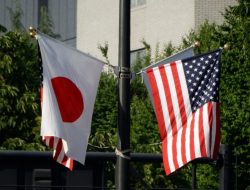China North Korea trade increased by around 30% year-on-year in the first half of 2025, according to official Chinese data released Friday. The total value of bilateral trade reached approximately $1.26 billion between January and June.
This uptick signals a recovery in economic relations between Beijing and Pyongyang, even as North Korea strengthens ties with Russia.
Key Export and Import Items
North Korea’s main exports to China include wigs and artificial eyelashes. These products are typically made by low-cost North Korean labor, using Chinese-supplied materials. The finished goods are then exported back to China for commercial distribution.
In contrast, China’s top exports to North Korea consist of plastic products used for producing carpets, wallpaper, furniture, and bedding. Observers believe these materials contribute to infrastructure and factory development inside North Korea.
Moreover, shipments of Chinese rice and fertilizers have resumed. Diplomatic sources view this as another sign of deepening economic engagement.
Trade Trend and Sanctions Background
Bilateral trade between the two countries once exceeded $6.5 billion in 2013. However, it declined sharply after the U.N. Security Council imposed sanctions in 2017 in response to North Korea’s nuclear and ICBM tests.
Despite sanctions, the recent surge in trade points to efforts by both governments to restore economic ties within the limits of international restrictions.
Labor Transfers and Possible Violations
Since late 2024, North Korea has reportedly sent workers to Chinese factories, potentially violating U.N. bans on overseas labor exports. However, it remains unclear whether China issued valid work visas or how long these workers will remain.
On a separate note, dozens of North Korean technicians have traveled to China since May for training in transportation, energy, and agriculture. According to diplomats, these unpaid training exchanges do not breach U.N. sanctions.








